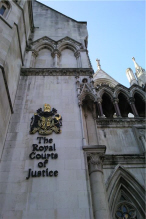The scope of “highway” for GLA Roads vesting
- Details
 The Court of Appeal has determined the scope of “highway” for GLA Roads vesting. David Elvin QC reports on a successful appeal by two councils.
The Court of Appeal has determined the scope of “highway” for GLA Roads vesting. David Elvin QC reports on a successful appeal by two councils.
In London Borough of Southwark & City of London v. Transport for London [2017] EWCA Civ 1220 the Court of Appeal (David Richards LJ, McFarlane and McCombe LJJ agreeing) allowed an appeal by the City of London and London Borough of Southwark against a decision of Mann J. [2015] EWHC 3448 (Ch) and, pursuant to the Arbitration Act 1996, overturned a preliminary award by the arbitrator John Male QC. The Arbitrator had held that the vesting of the designated GLA Roads (see ss. 14A-14D of the Highways Act 1980) under art 2(1)(a) of the GLA Roads and Side Roads (Transfer of Property etc.) Order 2000 vested (in July 2000) more property than was supported by the narrow concept of highway found in earlier authorities such as The Mayor etc of Tunbridge Wells v Baird [1896] AC 434, Vestry of St. Mary, Battersea v. County of London and Brush Provincial Electric Lighting Co Ltd. [1899] 1 Ch. 474 and Finchley Electric Lighting Co v Finchley Urban Council [1903] Ch. 437.
The Court of Appeal, disagreeing with Mann J. and the Arbitrator, held that “highway” within the Order had the same meaning as in the principal Highways Act 1980 which carried the same narrow meaning as found in cases dealing with the vesting of highways under a variety of earlier statutory provisions and the well-known encapsulation of in in Tithe Redemption Commission v Runcorn UDC [1954] Ch 383. At p 393 Denning LJ held:
“The statute of 1929 vested in the local authority the top spit, or, perhaps, I should say, the top two spits, of the road for a legal estate in fee simple determinable in the event of its ceasing to be a public highway.”
David Richards LJ held at [56]:
“57. In my judgment, the Councils are right in their identification of the purpose of these provisions. The purpose was that TfL should be the highway authority for the GLA roads. As with any highway authority, all that is needed to achieve that end is to vest the surface and necessary sub-soil in TfL. No adequate explanation has been provided by TfL as to why the residents and ratepayers of the Councils should be deprived, without compensation, of more property than is necessary to fulfil that purpose – essentially the same point as underpinned many of the cases from the mid-19th century onwards.”
Although the Highways Act 1980 does not contain a definition of “highway” the Court applied the approach found in the Highways Encyclopaedia notes to s. 328 of the 1980 Act:
“This section does not define the term “highway” and it is necessary therefore, whenever the meaning of this word is in issue, to refer to the common law rules. Stated shortly, a highway may be defined as a way over which all members of the public have the right to pass and repass. Their use of the way must be as of right, not on sufferance or by licence.”
Permission to appeal was refused.
David Elvin QC is a barrister at Landmark Chambers. Together with Richard Moules he represented the City of London Corporation and the London Borough of Southwark
Tim Morshead QC and Charles Banner – both also at Landmark – represented TfL.
Sponsored articles
Unlocking legal talent
Walker Morris supports Tower Hamlets Council in first known Remediation Contribution Order application issued by local authority
Lawyer (Planning and Regulatory)
Contracts Lawyer
Legal Director - Government and Public Sector
Locums
Poll













































